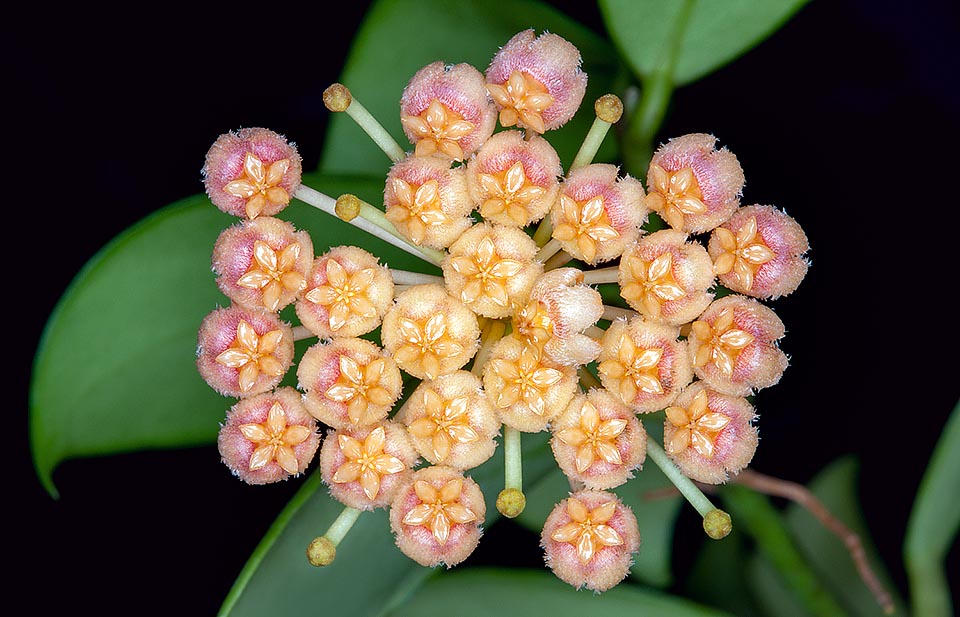Family : Apocynaceae

Text © Pietro Puccio

English translation by Mario Beltramini
The species is native to Philippines (Luzon) where it grows in the forests near to water streams.
The genus is dedicated to Thomas Hoy (ca. 1750-1822), botanist and curator of the gardens of the duke of Northumberland; the name of the species is the Latin adjective “obscurus, a, um” = uncertain, obscure.

Hoya obscura is an epiphyte or climbing semi-epiphyte or ramified semi-shrubby of Philippines, with quite rigid stems and adventitious roots to anchor on the supports © Giuseppe Mazza

Even 30 perfumed 0,7-0,8 cm corollas, umbel shaped. The colour depends on the luminosity © G. Mazza
It usually propagates by cutting, with 2-3 nodes, in very sandy loam or agriperlite maintained humid at a temperature of 26-28 °C, and by air layering; it easily roots also in water. Less frequently, it reproduces by seed, in late spring, placed superficially on an organic loam with addition of siliceous sand per a 30% maintained constantly humid, but without stagnations.
It is a discussed species on the point of view of nomenclature, as there is no agreement among the scholars whether considering it as a species or as a synonym.
Of easy cultivation and fast growth, it stands among the most floriferous of the genus, cultivable in open air in the tropical, subtropical and marginally temperate-warm climate zones in filtered sun light or partial shade; particularly ornamental also when not blooming due to the intense bronze-reddish colouration the leaves assume in condition of high luminosity.
Elesewhere, it can be cultivated in pot, even suspended, to be sheltered in winter in a particularly luminous location, even with some hours of direct sun in the morning in winter, with lowest temperatures over the 15 °C, although it can bear some degree less without damages.
It requires a very aerated and draining substratum, rich of organic substance, neutral or slightly acidic, and regular and abundant waterings in summer, but allowing the substratum to dry up before giving water again, spaced in winter, in way to maintain a slight constant humidity; useful are in summmer the nebulizations with non calcareous water at ambient temperature in presence of dry air and high temperatures. For the fertilizations may be used the same products suggested for the epiphytic orchids. The repottings are to be done when the substratum shows signs of deterioration, preferably between spring and early summer, paying attention to leave then the plant dry for some days, till when signs of vegetative regrowth do appear.
→ To appreciate the biodiversity within the APOCYNACEAE family please click here.
